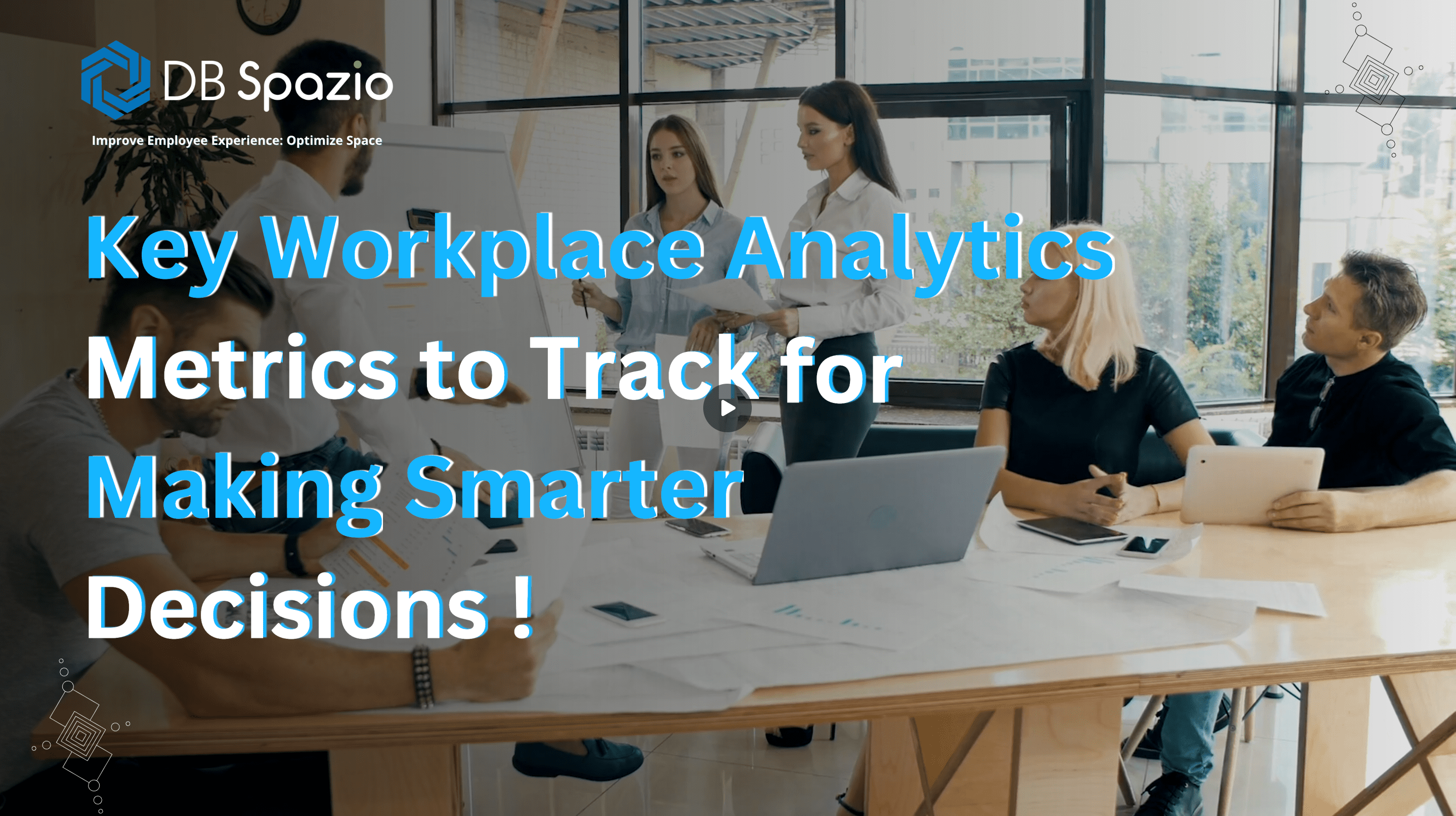We are living in a time of great uncertainty. The global markets are cautious, and businesses are focused on optimizing costs. Specifically in the workplace, while hybrid arrangements are gaining popularity, many employees still prefer working from home or remotely. This leaves enterprises with unpredictable attendance patterns at their offices.
The key drivers for hybrid workplaces include the need for employee experience, flexibility, and collaboration. However, due to the uncertain nature of office occupancy, enterprises cannot afford to neglect important tasks such as real estate planning, optimizing existing office areas, and consolidating spaces to improve utilization. These measures can lead to significant cost savings. Therefore, workplace analytics can no longer be considered a “nice to have” feature but must be viewed as a critical attribute for businesses to consider as part of their hybrid workplace technology.
What is Workplace Analytics?
Workplace analytics is the process of collecting and analyzing data related to the physical workplace environment and how it is used by employees. This includes tracking various metrics such as space utilization, room occupancy, department-wise usage, and hybrid work trends amongst others.
The goal of workplace analytics is to gain insights into how the workplace is functioning and how it can be optimized for better performance, cost savings, and employee satisfaction. It can also help businesses make decisions about workplace design, technology investments, and other aspects of the physical workplace environment.
Key Analytics Metrics to Consider
While Choosing a Hybrid Workplace Solution, ensure that it provides you with the relevant data and insights for decision-making.
During the pandemic, several companies created their own systems for reserving workspaces and creating schedules or acquired basic tools to address their immediate hybrid requirements. However, analytics was not usually a central feature in most of these tools. Even now, several providers of point solutions do not offer the extensive range of analytics necessary to efficiently monitor a hybrid workplace.
If you’re considering upgrading your existing tool or making a new purchasing decision, we have assessed various metrics that organizations can utilize to make data-driven decisions rather than relying on intuition. Here are some of these metrics for your reference.
| Analytics type |
Key Metrics |
Benefits |
| Workplace Utilization |
- Desk utilization
- Room utilization
- Amenities utilization
- Department-wise utilization
|
- Optimize Space: Workplace utilization analytics can help businesses optimize their space utilization by identifying underutilized areas or spaces that are used more often. This information can be used to make better decisions about how to allocate space and resources, which can ultimately lead to cost savings & better usage of the facility
- Reduce Real Estate Costs: Workplace utilization analytics can help businesses reduce their real estate costs by analyzing occupancy patterns. By optimizing the use of existing space, and consolidating existing portfolios, businesses can avoid the need to lease or purchase additional space, which can be a significant cost saving
|
| Hybrid Trends |
- Employee count working from home/office/remote
- Hybrid schedule adherence
- Return to Work Trend
|
- Finetune Hybrid Work Strategy – The hybrid trends reveal employee location & schedule preference, peak occupancy days, hours, choice of amenities, resource utilization trends and much more. This can help businesses finetune their hybrid workplace strategy based on facts and help align with their business goals
- Efficient Usage of Resources – Due to sporadic usage of facilities, planning affiliate services such as transport, meal etc. can be challenging. By observing hybrid trends, one can bring in planning efficiency in these services and avoid wastage
|
| Employee Experience |
- Collaboration trend
- Employee Satisfaction score
|
- Improve Employee Productivity: By understanding how employees use the workplace, businesses can identify and address factors that may be impacting productivity. For example, for the resources and amenities most frequently used, if employees spend a longer time locating them, reorganizing, and increasing their availability may increase productivity
- Enhance Employee Experience: Understanding how employees use the workplace can help businesses create a more positive and productive work environment. Unifying access to Siloed workplace applications on a single app can greatly enhance employee experience
- Encourage Collaboration: One of the key reasons businesses want employees back to work is to encourage collaboration. By measuring collaboration trends between the team as well as cross-functional teams, we can monitor trends and take steps to increase them further, as appropriate
|
| Efficiency Metrics |
- Ghost bookings count
- Time reclaimed from ghost bookings
- Early Checkouts
- Day-wise/Time slot-wise analysis
|
- Efficient usage of workplace resources: These metrics help drive efficiencies for workplace resources. Many companies struggle to bring in adherence towards meeting room or desk occupancy against bookings. This leads to wasted resources. Auto cancellation feature offered by hybrid workplace providers can help reclaim workspace, if not occupied within buffer time. Similarly, imbibing habits of early checkouts can release resources that can be used by other employees
|
| Sustainability |
- Occupancy v/s Energy consumption
- IAQ (Indoor Air Quality) Monitoring
|
- Support Sustainability Goals: Workplace occupancy analytics can be linked to energy usage to support sustainability goals. This can help identify areas where energy or other resources are being wasted. By optimizing the use of space and resources, businesses can reduce their environmental footprint and achieve sustainability targets
- Energy Savings: Monitoring indoor air quality can help to identify areas where energy is being wasted. By identifying and correcting inefficiencies in HVAC systems, energy usage can be reduced, leading to cost savings
|
| Employee Wellness |
- IAQ (Indoor Air Quality) parameters monitoring against global benchmarks such as WELL, ISHRAE etc.
|
- Health and Safety: IAQ monitoring helps ensure that the air in the office is free of harmful pollutants and contaminants that can negatively impact employees’ health and safety
- Increased Productivity: Poor indoor air quality can also affect employee productivity by causing fatigue, lethargy, and decreased cognitive function. Monitoring and improving IAQ can help improve overall productivity
- Compliance: In some cases, IAQ monitoring may be required for compliance reasons. This typically demonstrates a commitment to employee health and safety, which can improve the company’s reputation and attract and retain employees
|
Conclusion:
Workplace utilization analytics provide valuable insights that can help businesses optimize their resources, improve productivity, and support their sustainability & employee wellness goals, all of which can contribute to a more successful and profitable business.
We highly recommend that companies evaluate the analytical capabilities of their current or prospective tools. Utilizing analytics can result in a quick return on investment by reducing costs, improving the employee experience, and facilitating the success of a hybrid workplace program.




